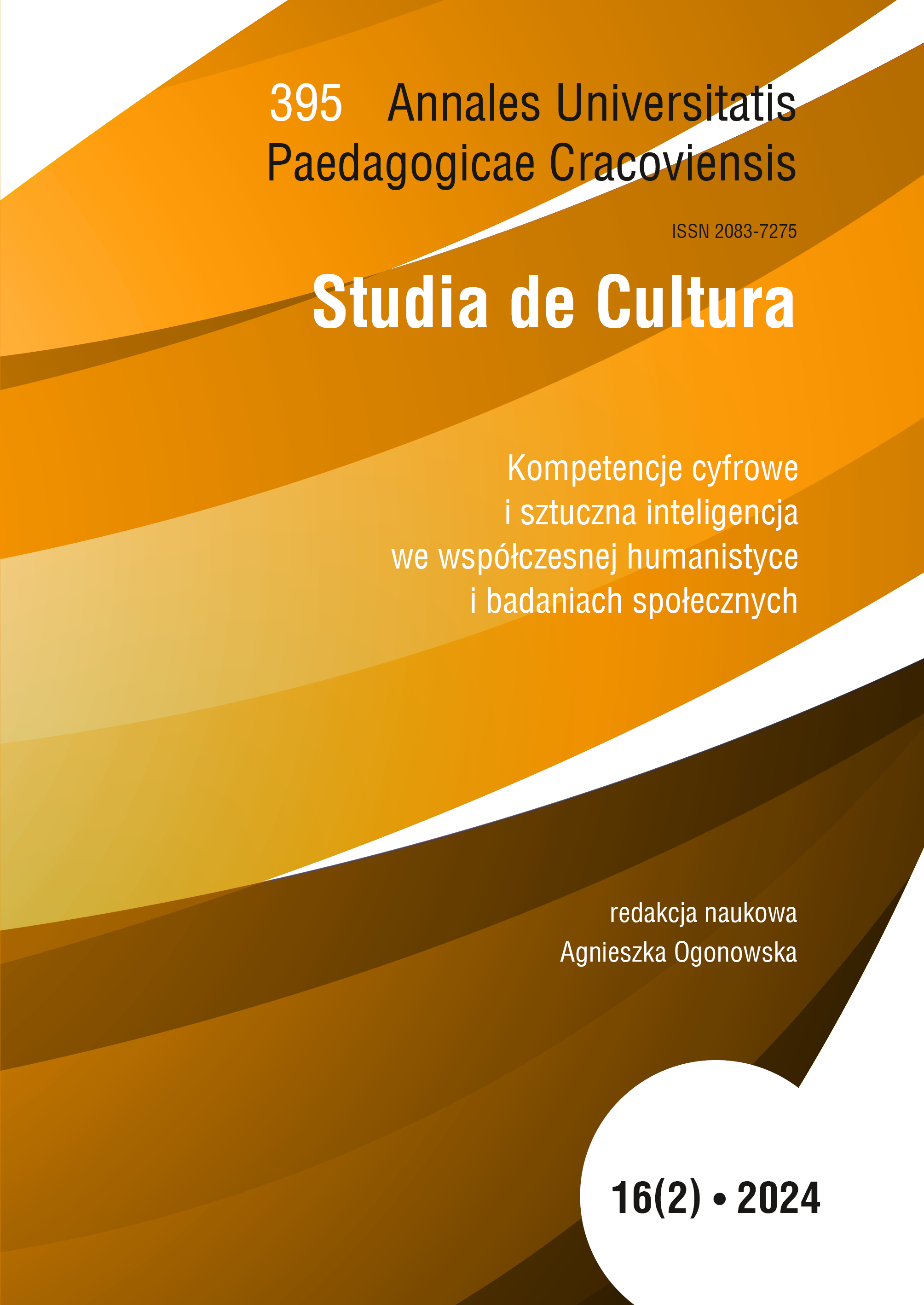Abstrakt
Niniejszy artykuł przedstawia wpływ neuromarketingu na analizę zachowań konsumenckich i na reklamę. Dzięki integracji neuronauki z badaniami konsumenckimi otwierają się nowe możliwości badania wewnętrznych procesów umysłowych, które wpływają na decyzje konsumentów. Neuromarketing to dziedzina komercyjnej komunikacji marketingowej, która stosuje neuropsychologię do badań rynkowych, badając sensoryczno-motoryczne, poznawcze i afektywne reakcje konsumentów na bodźce marketingowe. Autor koncentruje się na ważnych aspektach neuromarketingu, w tym na potencjalnych korzyściach dla marketerów i na narzędziach neuronauki konsumenckiej. Omawia też znaczenie reklamy i emocjonalne reakcje konsumentów na nią. Badania pokazują, że reklamy wywołujące pozytywne emocje mają większy wpływ na zapamiętywanie i pozytywne postrzeganie marki. Inne badania koncentrują się na związku między lojalnością wobec marki a aktywnością mózgu – pokazano, że lojalni klienci wykazują większą aktywność w obszarach mózgu związanych z emocjami i pamięcią. Artykuł kończy się omówieniem konkretnych zastosowań neuromarketingu na Wydziale Komunikacji w Mediach Masowych Uniwersytetu Świętych Cyryla i Metodego w Trnawie. Działający na wydziale Neurolab pozwala mierzyć reakcje na różne treści oraz identyfikować skuteczne i nieskuteczne elementy reklam. Ponadto w artykule przedstawiono przykłady badań nad zastosowaniami neuromarketingu, w tym analizę postów na Facebooku Policji Republiki Słowackiej oraz postrzeganie reklamy telewizyjnej przez markę COOP Jednota Slovakia.
Bibliografia
Agarwal Sharad. 2014. „Neuromarketing For Dummies”. Journal of Consumer Marketing 31(4), 330–331.
Zobacz w Google Scholar
Ambler Tim, Burne Thomas. 1999. „The impact of affect on the memory of advertising”. Journal of Advertising Research 39(2). 25–34.
Zobacz w Google Scholar
Ambler Tim, Ioannides Andreas, Rose Steven. 2000. „Brands on the brain: Neuroimages of advertising”. Business Strategy Review 11(3). 17–30.
Zobacz w Google Scholar
Biemer Paul, Groves Robert M., Lyberg Lars E., Mathiowetz Nancy A., Sudman Seymour. 2011. Measurement Errors in Surveys. New York.
Zobacz w Google Scholar
Center for Neuroeconomics Study at Duke University. http://dibs.duke.edu/research/d-cides/research/neuroeconomics [dostęp: 2.01.2024].
Zobacz w Google Scholar
Darázs Tamás, Šalgovičová Jarmila. 2019. „Research of sensory perception of the product on the market by means of neuromarketing”. Is the New Online 757.
Zobacz w Google Scholar
Georges Patrick M. 2014. Neuromarketing in Action: How to Talk and Sell to the Brain. London.
Zobacz w Google Scholar
Gottfried Jay A., O’Doherty John, Dolan Raymond J. 2003. „Encoding predictive reward value in human amygdala and orbitofrontal cortex”. Science 301(5636). 1104–1107.
Zobacz w Google Scholar
Greene Joshua D., Sommerville Brian, Nystrom Leigh E., Darley John M., Cohen Jonathan D. 2001. „An fMRI investigation of emotional engagement in moral judgment”. Science 293(5537). 2105–2108.
Zobacz w Google Scholar
Ioannides Andreas A., Liu Lichan, Theofilou Dionyssios, Dammers Jürgen, Burne Tom, Ambler Tim, Rose Steven. 2000. „Real time processing of affective and cognitive stimuli in the human brain extracted from MEG signals”. Brain Topography 13(1). 11–19.
Zobacz w Google Scholar
Kenning Peter, Plassmann Hilke, Kugel Harald, Schwindt Wolfram, Deppe Michael. 2007. „Neural correlates of attractive ads”. FOCUS Magazin. 287–298.
Zobacz w Google Scholar
Kenning Peter, Plassmann Hilke. 2008. „How Neuroscience Can Inform Consumer Research”. IEEE Transactions on Neural Systems and Rehabilitation Engineering 16(6). 532–538.
Zobacz w Google Scholar
Klucharev Vasily, Smidts Ale, Fernandez Guillén. 2008. „Brain mechanisms of persuasion: how expert power modulates memory and attitudes”. Social Cognitive and Affective Neuroscience 3(4). 353–366.
Zobacz w Google Scholar
Knutson Brian, Fong Grace W., Adams Charles M., Varner Jerald L., Hommer Daniel. 2001. „Dissociation of reward anticipation and outcome with event‑related fMRI”. NeuroReport 12(17). 3683–3687.
Zobacz w Google Scholar
Lee Nick, Broderick Amanda J., Chamberlain Laura. 2007. „What is «neuromarketing»? A discussion and agenda for future research”. International Journal of Psychophysiology 63(2). 199–204.
Zobacz w Google Scholar
Morwitz Vicky, Fitzsimons Gavan. 2004. „The Mere‑Measurement Effect: Why Does Measuring Intentions Change Actual Behavior?”. Journal of Consumer Psychology 14(1–2). 64–74.
Zobacz w Google Scholar
Plassmann Hilke, Ambler Tim, Braeutigam Sven, Kenning Peter. 2007. „What can advertisers learn from neuroscience?”. International Journal of Advertising 26(2). 151–175.
Zobacz w Google Scholar
Reimann Martin, Castaño Raquel, Zaichkowsky Judith, Bechara Antoine. 2012. „How We Relate to Brands: Psychological and Neurophysiological Insights into Consumer‑Brand Relationships”. Journal of Consumer Psychology 22. 128–142.
Zobacz w Google Scholar
Reimann Martin, MacInnis Deborah, Folkes Valerie, Uhalde Adrianna. 2018. „Insights into the Experience of Brand Betrayal: From What People Say and What the Brain Reveals”. Journal of the Association for Consumer Research 3(2), 240–254.
Zobacz w Google Scholar
Rossiter John, Silberstein Richard. 2001. „Brain‑imaging detection of visual scene encoding in long‑term memory for TV‑commercials”. Journal of Advertising Research 41. 13–22.
Zobacz w Google Scholar
Shapiro David. 1997. „Descartes’ error: Emotion, reason, and the human brain – Damasio, A.T.”. Theory & Psychology 7(6). 837–856.
Zobacz w Google Scholar
Spinella Marcello, Yang Bijou, Lester David. 2008. „Prefrontal cortex dysfunction and attitudes toward money: A study in neuroeconomics”. Journal of Socio‑Economics 37(5). 1785–1788.
Zobacz w Google Scholar
Vlăsceanu Sebastian. 2004. „New directions in understanding the decision‑making process: neuroeconomics and neuromarketing”. Elsevier 17. 758–762.
Zobacz w Google Scholar
Wiggin Kyra, Reimann Martin, Shailendra Jain. 2019. „Curiosity Tempts Indulgence”. Journal of Consumer Research 45. 1194–1212.
Zobacz w Google Scholar
Young Charles. 2002. „Brain waves, picture sorts, and branding moments”. Journal of Advertising Research 42(4). 42–53.
Zobacz w Google Scholar

Utwór dostępny jest na licencji Creative Commons Uznanie autorstwa – Użycie niekomercyjne 4.0 Międzynarodowe.
Prawa autorskie (c) 2024 Annales Universitatis Paedagogicae Cracoviensis | Studia de Cultura

